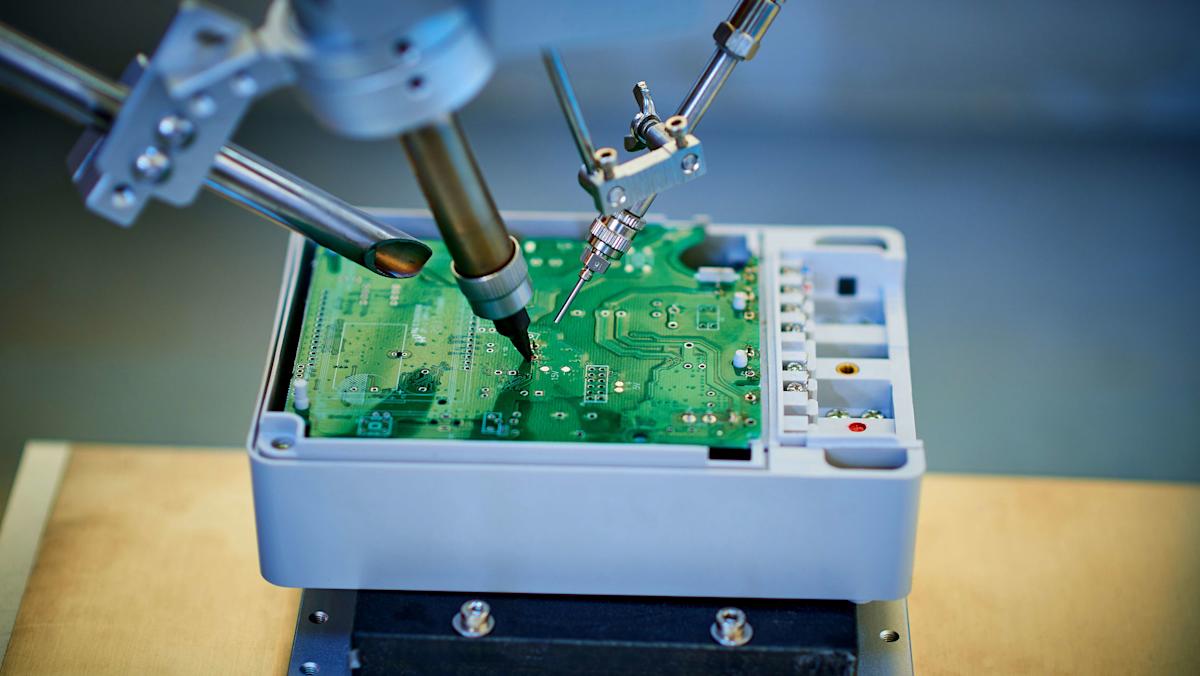Chip Wars: America's Uphill Battle in Silicon Showdown with Asia
Manufacturing
2025-04-15 23:39:33Content

The United States is pursuing an industrial strategy for semiconductor development that fundamentally misunderstands the historical roots of technological innovation. While current policy leans heavily on isolation and protectionism, the remarkable rise of Asia's semiconductor industry was actually built on a foundation of open collaboration, knowledge sharing, and strategic partnerships.
The semiconductor ecosystem that emerged in countries like Taiwan, South Korea, and Japan was not the result of closed-off, nationalistic approaches, but rather a dynamic network of cooperation between government, academic institutions, and private enterprises. These regions succeeded by creating interconnected innovation platforms where ideas, talent, and resources flowed freely across traditional boundaries.
By contrast, the current U.S. approach of restricting technology transfers and imposing strict trade barriers risks stifling the very innovation it seeks to promote. True technological advancement has always thrived on openness, mutual learning, and the cross-pollination of ideas—principles that were instrumental in establishing Asia's technological leadership in the first place.
If America genuinely wants to revitalize its semiconductor capabilities, it must shift from a defensive, isolationist mindset to an approach that embraces global collaboration, encourages international talent exchange, and recognizes that breakthrough technologies are rarely developed in complete isolation.
The Silicon Paradox: How America's Tech Isolation Strategy Might Backfire
In the high-stakes arena of global technological competition, the United States finds itself at a critical crossroads, wrestling with a complex challenge that could reshape the future of semiconductor innovation and economic supremacy. The current approach to semiconductor development represents a dramatic departure from the collaborative strategies that originally propelled technological advancement.Navigating the Treacherous Waters of Technological Protectionism
The Historical Context of Semiconductor Innovation
The semiconductor industry's evolution is a testament to the power of international collaboration and knowledge exchange. Historically, technological breakthroughs emerged not from isolation, but from intricate networks of researchers, engineers, and institutions spanning multiple continents. The remarkable rise of Asian semiconductor powerhouses like Taiwan, South Korea, and Japan demonstrates how cross-border partnerships and shared intellectual resources can create unprecedented technological ecosystems. The United States' current strategy of technological protectionism stands in stark contrast to these proven collaborative models. By implementing stringent export controls and restricting technology transfers, the nation risks creating a counterproductive environment that might ultimately hinder rather than accelerate technological progress.The Economic Implications of Technological Isolation
Economic research suggests that technological innovation thrives on openness, diversity, and dynamic knowledge exchange. The semiconductor industry is inherently global, with complex supply chains and interdependent research networks. By attempting to create a self-contained ecosystem, the United States may inadvertently limit its own technological potential. The intricate nature of semiconductor manufacturing requires sophisticated expertise, massive capital investments, and continuous research and development. No single nation, regardless of its technological prowess, can independently develop cutting-edge semiconductor technologies without engaging with global talent and resources.Geopolitical Dynamics and Technological Competition
The current geopolitical landscape presents a nuanced challenge for technological development. While national security concerns are legitimate, overly restrictive policies can create unintended consequences. Countries like China and other emerging technological powers are rapidly developing alternative technological pathways, potentially reducing the long-term influence of American semiconductor technologies. The semiconductor industry represents more than just a technological domain; it is a critical infrastructure that underpins modern economic and military capabilities. By adopting a protectionist approach, the United States risks fragmenting global technological ecosystems and potentially accelerating the development of competing technological standards.The Path Forward: Collaborative Innovation
Successful technological advancement requires a delicate balance between protecting strategic interests and maintaining open channels of international collaboration. The most effective approach involves creating robust, flexible frameworks that enable controlled knowledge exchange while safeguarding critical technological assets. Policymakers must recognize that technological leadership is not achieved through isolation but through strategic engagement, investment in human capital, and creating environments that attract global talent and foster innovative thinking.Reimagining Technological Strategy
The semiconductor industry's future demands a more nuanced, adaptive approach. This involves developing comprehensive strategies that balance national security concerns with the inherent collaborative nature of technological innovation. Investments in education, research infrastructure, and international partnerships will be crucial in maintaining technological leadership. The United States has historically been a global leader in technological innovation precisely because of its ability to attract, integrate, and leverage diverse global talent. Returning to these foundational principles could be the key to maintaining technological supremacy in an increasingly complex global landscape.RELATED NEWS
Manufacturing

Manufacturing Sector Gets Boost: Gotomyerp Unveils $4K Consulting Windfall to Revolutionize Cloud ERP Strategies
2025-04-23 18:40:00
Manufacturing

Tariff Tremors: How Global ATM Giant Navigates Economic Crosswinds
2025-04-19 23:10:00
Manufacturing

Apple's Massive U.S. Bet: Inside the Tech Giant's Groundbreaking Investment
2025-02-24 19:21:00





